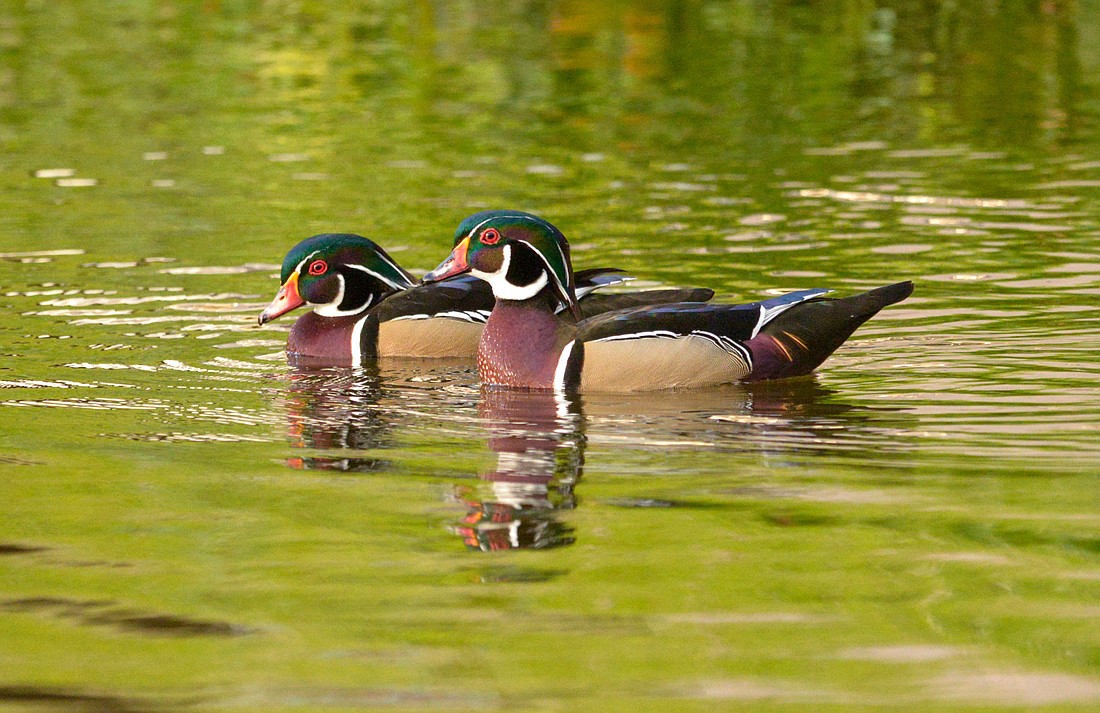- December 4, 2025
-
-
Loading

Loading

With their crested heads and broad, long tails, wood ducks are one of the most striking birds in Florida.
Males are extremely ornate during breeding season, with a mixture of iridescent blues, greens and purple, when they use their colorful markings to attract females. In late summer, they molt into more demure colors, though you can still recognize them by their striking red eyes and distinctive bill. Like all ducks, they live near water. But, as suggested by their name, they specifically inhabit wooded wetland areas, where they nest in tree cavities.
In the early 1900s, wood ducks were almost made extinct. Given their coloring, they were a popular target for hunters. They also suffered from habitat loss, a term used to describe the result of an ecosystem being dramatically changed by human activities, as happened when early settlers filled wetlands for croplands, and cut down trees for farming, paper and lumber. Wood ducks were left with fewer and fewer places to call home.
Thankfully, with the passing of the Federal Migratory Bird Treaty Act in 1918, hunting of wild birds was restricted. Land management helped re-establish woodlands. As wood ducks are happy to nest in artificial cavities or nest boxes, to negate the impact of a shortage of suitable tree cavities for nesting, the Florida Fish and Wildlife Conservation Commission maintain wood duck nest boxes on public waters throughout the state.
And you can help. If you have a pond or lake with restricted access, and a lot of growth around the edges, consider installing a nesting box. You could help boost local wood duck populations, or support other cavity nesting birds.
Save our Seabirds is a non-profit organization whose mission is to rescue and rehabilitate
sick and injured birds, releasing as many as they can, while educating our community about
avoiding injuries and preserving habitats.